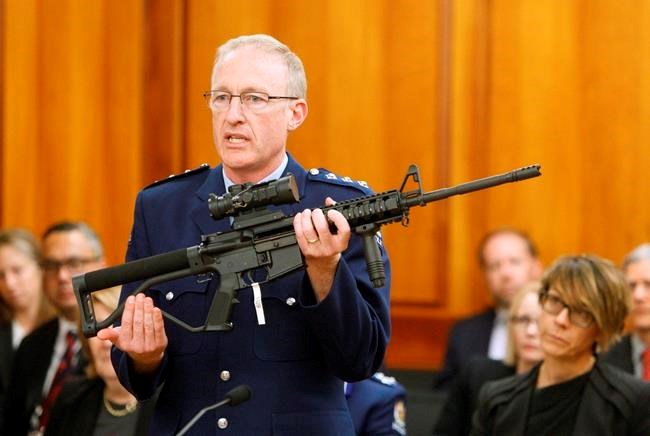OTTAWA — The Trudeau government is expected to introduce gun-control legislation this week that gives owners the choice of keeping recently outlawed firearms under strict conditions instead of turning them in for compensation.
However a gun-control expert who has studied buyback initiatives says optional programs, as opposed to compulsory ones, have a greater chance of missing the mark of making communities safer.
"The empirical evidence, the studies, show that a voluntary buyback is the most likely to fail," said Philip Alpers, an adjunct associate professor at the University of Sydney's school of public health in Australia.
Alpers points to major gun buyback programs in Australia and New Zealand that not only prohibited certain guns but included stiff penalties for not turning them in.
"It was the penalty that made the difference with the success of both the Australian and New Zealand gun buybacks," he said in an interview. "If you make it voluntary, you're making it optional."
The Canadian government outlawed an array of firearms by cabinet order in May, saying they were designed for the battlefield, not hunting or sport-shooting.
The ban covers some 1,500 models and variants of what the government considers assault-style weapons, meaning they can no longer be legally used, sold or imported.
The coming bill is believed to propose a program to buy back these firearms for a fair price, but allow owners to hang on to them if certain conditions are met.
Many gun-control advocates have been pressing the Liberals to make the buyback mandatory, warning that firearms that remain with owners could be misused or stolen.
When 35 people were gunned down at the Port Arthur Historic Site in Tasmania in 1996, Australia banned semi-automatic and pump-action rifles and shotguns, buying back some 650,000 from owners. The National Firearms Agreement also toughened licensing, registration and safe-storage provisions.
More than a dozen mass shootings occurred in Australia in the 25 years before the reforms, but after the buyback there were none until 2014.
"For Australia, the NFA seems to have been incredibly successful in terms of lives saved," said a 2011 assessment by Harvard University's Injury Control Research Center.
New Zealand implemented a buyback following the March 2019 shootings at two mosques that killed 51 people and injured many others.
Before the initiative, police estimated there were between 55,000 and 240,000 newly outlawed firearms in the country, based on a consulting firm's analysis.
More than 61,000 firearms were handed in or modified.
A gun group criticized the buyback, saying there were 170,000 prohibited firearms in New Zealand, but the group Gun Control NZ says it has seen no credible evidence to support this figure.
Group co-founder Philippa Yasbek says she is concerned the Canadian government has been misled by the discredited number.
The compromise solution of a voluntary buyback in Canada would antagonize the gun lobby without yielding the desired "good safety outcomes," Yasbek said in an interview.
"I definitely think they should be going for a mandatory buyback and following the Australia and New Zealand model."
Alpers said if the Trudeau Liberals cite the New Zealand or Australian programs as reasons to avoid a mandatory buyback, "the information they've been given, is inaccurate at best and malicious at worst."
"By and large, those who claim that the New Zealand and Australian gun buybacks are failures are those who claim that all gun control is a failure," he said.
"And so if the Liberal government listens to those people, they will be falling victim to misinformation."
Aside from fleshing out last spring's ban of many firearms, the long-promised Liberal bill would propose stricter storage provisions and target illegal gun smuggling.
The bill is also expected to:
— Enhance the ability of doctors, victims of domestic abuse and families to raise red flags on those with guns who pose risks to themselves or an identifiable group;
— Include new penalties for gun purchases by a licensed buyer on behalf of an unlicensed one;
— Maintain current firearm magazine limits, which are generally five bullets for hunting rifles and shotguns and 10 for handguns, but crack down on the sale of magazines that can be modified to hold more cartridges.
This report by The Canadian Press was first published Feb. 15, 2021.
Jim Bronskill, The Canadian Press




